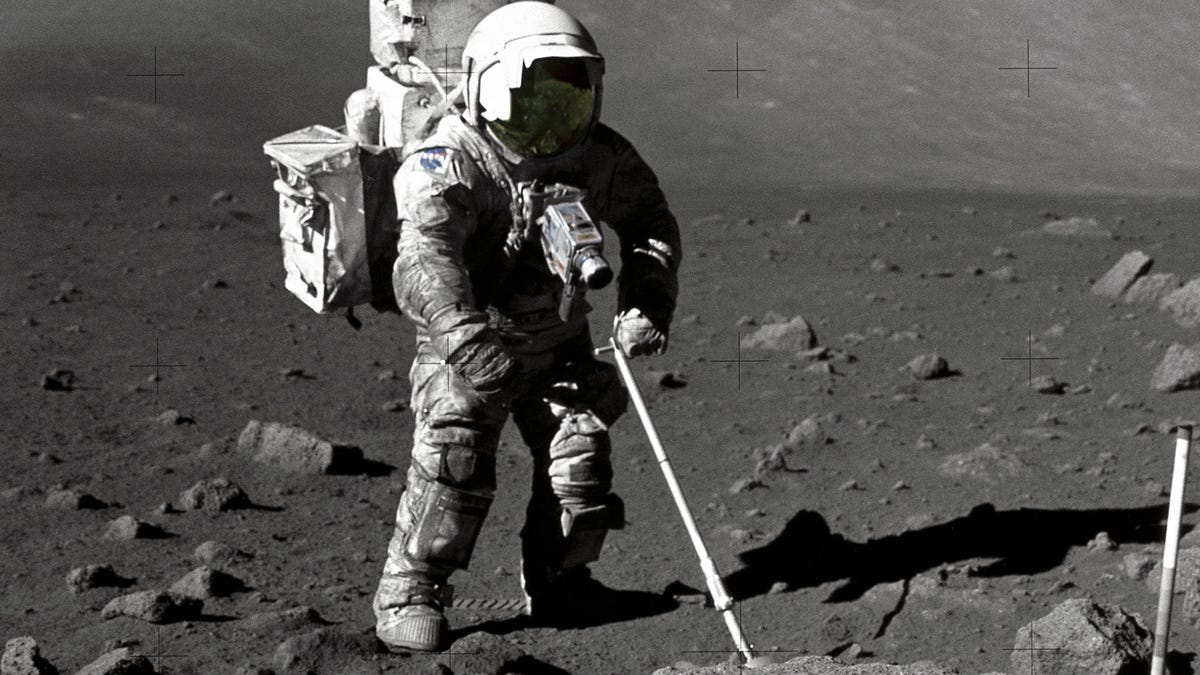NASA busts out untouched moon rocks for study
NASA's stash of pristine lunar material is about to get some serious scrutiny.

NASA astronaut Harrison Schmitt collect lunar samples during the Apollo 17 mission in 1972.
The Apollo missions to the moon didn't come back empty-handed. NASA astronauts carried samples of the moon back to Earth. Now untouched pieces of the moon will pass into the hands of today's scientists after spending nearly 50 years in storage.
NASA administrator Jim Bridenstine announced the lunar sample studies in a speech at the Kennedy Space Center in Florida on Monday. It was a combination of a pep rally for NASA's proposed 2020 budget and a review of the space agency's future mission plans, which includes returning astronauts to the moon.
"I would like to thank the Apollo generation for preserving these samples so that our generation could have this opportunity," said Bridenstine.
NASA selected nine teams to investigate the samples, which were gathered during the Apollo 15, 16 and 17 missions. Those groups come from within NASA as well as the University of Arizona, University of California Berkeley, US Naval Research Laboratory, Mount Holyoke College and the University of New Mexico.
The teams will look into topics as diverse as space weathering, the geologic history of the Apollo 17 site and volcanic activity on the moon. The teams will work with NASA experts to decide on the best way to open the samples in order to avoid contamination.
A sample from the 1972 Apollo 17 mission is particularly fascinating. It consists of 1.8 pounds (800 grams) of material enclosed in a tube that was pounded into moon. This will give researchers a good look at the layers below the surface. Some of the other samples were kept frozen or stored in helium.
"These samples were deliberately saved so we can take advantage of today's more advanced and sophisticated technology to answer questions we didn't know we needed to ask," said NASA's Lori Glaze.
Bridenstine says NASA felt confident in studying these samples since the space agency expects to be able to gather fresh moon rocks in the near future.

